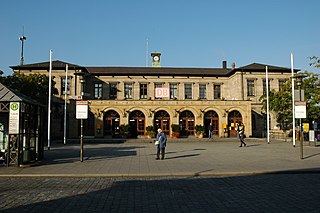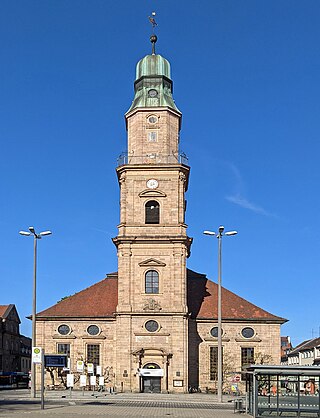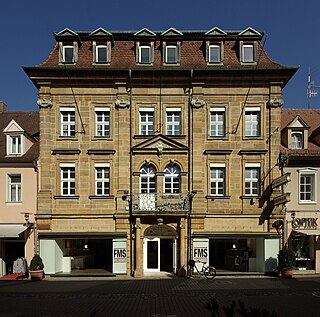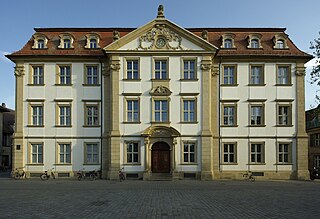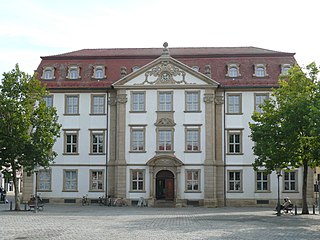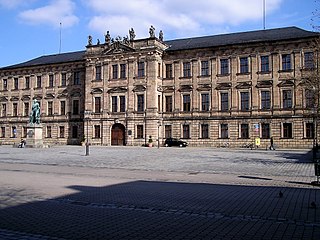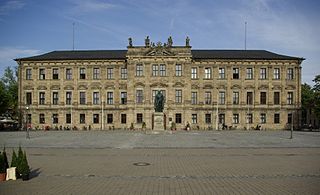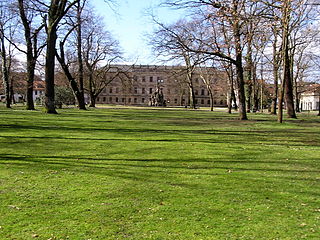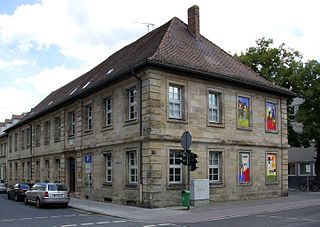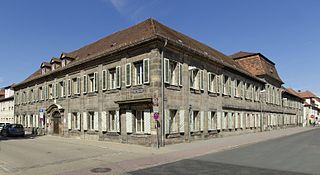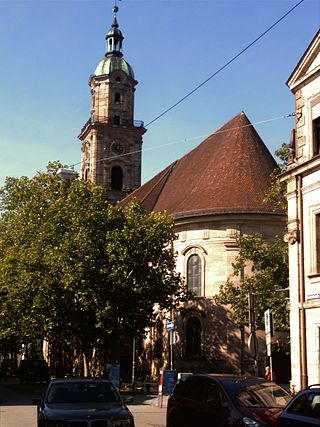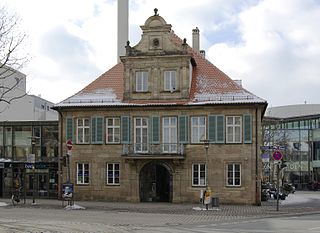Self-guided Sightseeing Tour #1 in Erlangen, Germany
Legend
Tour Facts
1.8 km
13 m
Experience Erlangen in Germany in a whole new way with our free self-guided sightseeing tour. This site not only offers you practical information and insider tips, but also a rich variety of activities and sights you shouldn't miss. Whether you love art and culture, want to explore historical sites or simply want to experience the vibrant atmosphere of a lively city - you'll find everything you need for your personal adventure here.
Individual Sights in ErlangenSight 1: Bahnhof Erlangen
Erlangen station is located on the Nuremberg–Bamberg railway in the German state of Bavaria. It is the oldest railway station of the city of Erlangen and it is the only station in the city served by long-distance trains. It is classified by Deutsche Bahn as a category 3 station and has four platform tracks.
Sight 2: Hugenottenkirche
The Huguenot Church is the name given to the Evangelical Reformed Church in Erlangen. It was built between 1686 and 1693 according to the plans of Johann Moritz Richter. The construction was carried out in the course of the design of the Erlangen Neustadt, a baroque planned city. The tower dates from 1732 to 1736.
Sight 3: Besoldsches Haus
The Besoldsche Haus is a baroque aristocratic palace in Erlangen, Germany. The building with the address Hauptstraße 26 was built between 1733 and 1734 and is a listed building.
Sight 4: Kunstpalais
The Kunstpalais Erlangen is the successor institution of the Städtische Galerie Erlangen. Since 1974, this has been located in the Palais Stutterheim, which was built between 1728 and 1730 on behalf of and for Christian Hieronymus von Stutterheim and is located in the centre of the Huguenot city. After a two-year renovation phase, the Kunstpalais was opened in 2010 with an exhibition space doubled to more than 500 m² on the ground floor and basement of the Palais Stutterheim under the founding director Claudia Emmert.
Sight 5: Stutterheimsches Palais
The Stutterheim Palace is the most important Baroque aristocratic palace in Erlangen. It is located on the south side of the market square and was built between 1728 and 1730. Today it houses the Erlangen City Library and the Kunstpalais Erlangen.
Sight 6: Paulibrunnen
The Schloßplatz in Erlangen, together with the neighbouring market square, forms today's centre of the city. Together, they are part of the Erlangen pedestrian zone and the venue for numerous markets and festivals.
Sight 7: Schloss Erlangen
The Schloss Erlangen is a residence in Erlangen, built between 1700 and 1704 by George William, Margrave of Brandenburg-Bayreuth. Work was initially led by Antonio della Porta and after his death in 1702 by Gottfried von Gedeler. It was the first baroque building built from scratch in Franconia.
Sight 8: Gefallenendenkmal der Universität
The castle garden in Erlangen is considered one of the first baroque gardens in Franconia. In the garden, which has been open to the general public since 1849, the largest garden festival in Europe takes place every year with the Schlossgartenfest of the Friedrich-Alexander-Universität Erlangen-Nürnberg.
Sight 9: Kollegienhaus
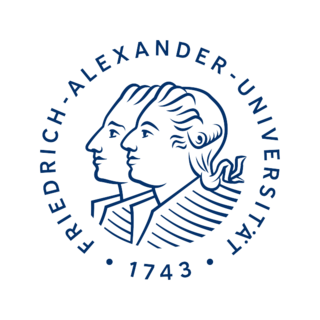
The University of Erlangen–Nuremberg is a public research university in the cities of Erlangen and Nuremberg in Bavaria, Germany. The name Friedrich–Alexander is derived the university's first founder Friedrich, Margrave of Brandenburg-Bayreuth, and its benefactor Alexander, Margrave of Brandenburg-Ansbach.
Sight 10: Lynckersches Palais
The Lyncker Palace is a Baroque palace in Erlangen, Germany. The building at Friedrichstraße 35 was built in 1748 and today houses the Erlangen Singing and Music School. It is a listed building.
Sight 11: Egloffsteinsches Palais
The Egloffstein Palace is the largest Baroque aristocratic palace in Erlangen. The building with the addresses Friedrichstraße 17 and Südliche Stadtmauerstraße 28 was built in 1718 and today houses the adult education center of the city of Erlangen and the German-French Institute Erlangen.
Sight 12: Neustädter Kirche
Neustädter Kirche is one of three large downtown churches of the Baroque old town of Erlangen. Germany. The church is Lutheran. It dominates the town, together with the Reformed Hugenottenkirche and the Lutheran Altstädter Kirche.
Sight 13: Kunstmuseum Erlangen
The Kunstmuseum Erlangen is a regional exhibition house, archive and museum for contemporary art in Erlangen. It is located in the Loewenich Palace. Since July 2016, the sponsor has been the city of Erlangen.
Share
How likely are you to recommend us?
Disclaimer Please be aware of your surroundings and do not enter private property. We are not liable for any damages that occur during the tours.
GPX-Download For navigation apps and GPS devices you can download the tour as a GPX file.
